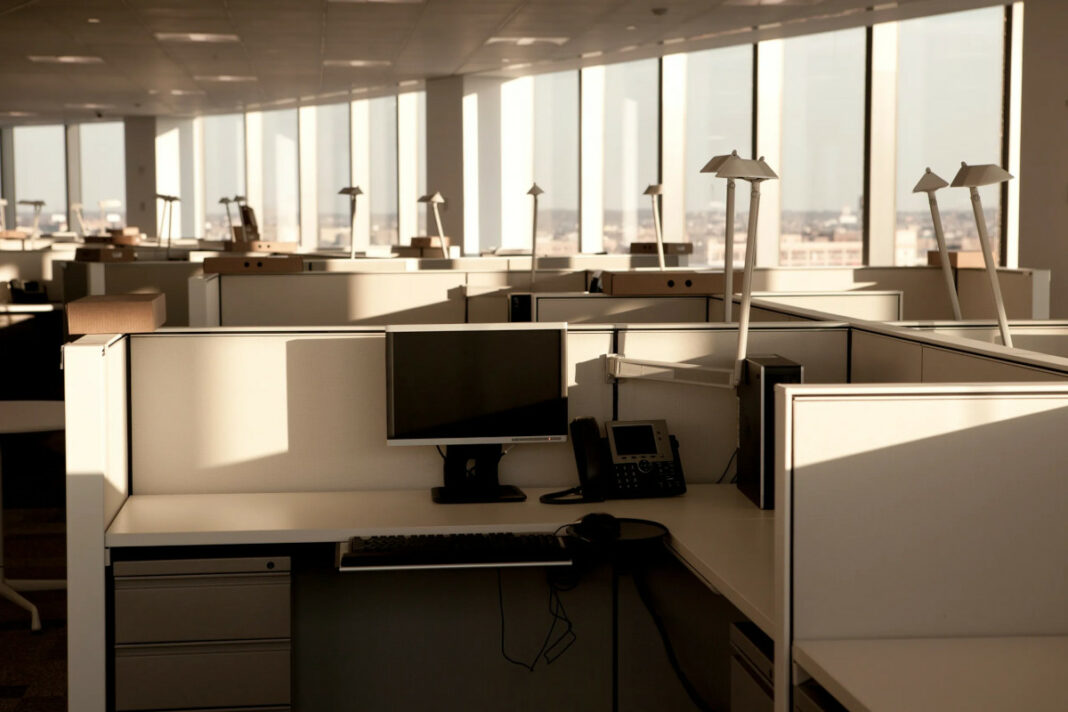Endless reports reveal how corporate CEOs and major companies are fighting to get workers back into the office. If the pandemic had any profound effect on the country and world, it proved that people can work from home and do their jobs effectively without going into the office every day and clogging the highways.
CEOs apparently do not like this business model of total work from home because they cannot see their employees or micromanage them the way they did before the pandemic. Their excuse, however, is that inter-office personal connections are needed for better business productivity, innovation, creativity.
But workers see it differently. Workers believe and are sure they can perform their jobs just as well at home or anywhere for that matter, where there is an Internet connection to the company network. People want the flexibility that comes with working from home with more family time and freedom, and to avoid long commutes in traffic.
One would think that when there are less cars on the roads, the better the traffic would be, which lessens car maintenance and repairs, and highway accidents. However, CEOs hate that the buildings they are renting are going unused or are half empty, which eats into their profit margins because they still must pay rent for unused workspace.
Landlords of those buildings also, are complaining that they are not collecting enough rent from the renters, which is another strike against workers. Yet, workers are not relenting in the fight. To them, it simply makes more sense to work from home than go into a building every day. According to a report from Forbes, the argument is heating up and ongoing.
Another argument from management and CEOs is that it is not fair that only some people get to work from home while others, such as truck drivers, service workers and other inclement blue-collar workers must work outside. Yet they fail to realize that many people chose those careers because they would rather not work in an office in the first place.
“The always-quotable Elon Musk is ordering employees back, saying working from home is “bullshit.” Interviewed on CNBC, Musk told remote workers to “get off their moral high horse,” since others like workers in auto factories, food service delivery, and home repair can’t work at home, a split he called “morally wrong.”
Report continued: “More than three years after the Covid-19 pandemic started, returning to the office versus working from home still hasn’t settled down. There’s an ongoing tension around working from home between management’s need for innovation and discipline versus workers’ desires for more flexible arrangements and reduced commuting time. As urbanist and historian Dror Poleg likes to remind us, “commutes waste people’s most productive hours.”
More companies are requiring workers to come in at least a few days per week. This “hybrid” style may end up as the new normal for offices, with uncertain impacts on jobs and careers, but the jury is still out.
The early stages of the pandemic saw experimentation with full-time remote work. But many senior leaders increasingly feel having staff together in the office is essential for company culture, and to generate new ideas and innovation.
But if firms are ramping up the return to offices, why don’t the data for office use show it? Office occupancy, rental price, and employment data all show the ongoing tension between employers and employees. The indicators we have for office work have been static for over a year, and aren’t displaying a major upward trend.
One frequently watched indicator is Kastle Systems’ “Back to Work Barometer,” which measures office keycard entry swipes in ten metropolitan areas. Those numbers aren’t moving much. Kastle’s most recent occupancy estimate is 49.3%, up from 42.9% in late May 2022 but nowhere close to the base 100% for occupancy just before the pandemic.
A third set of indicators appeals to economists—market rents, new construction, and occupancy for commercial office space. These market demand-based indicators also show continuing weakness.
Commercial Edge reports the asking rents for offices space rose nationally an average of 2.3%. You might be encouraged by that—at least it’s positive. But the Consumer Price Index, a broad measure of overall inflation, rose in the same period by 4.9%. This means asking prices for office space actually fell in real dollars. In contrast, the CPI for that same period registered an 8.1% rise in household shelter costs.
It could be the increased company requirements for working in offices simply haven’t taken hold yet. Or it could be that workers—especially higher skilled, educated, and mobile ones—are resisting more in-office work, and companies haven’t figured out how to deal with that.
BlackRock’s call for more time in the office shows us one side of the coin—employers often want employees back for innovation, culture, and control issues. But falling real rents and continuing high vacancy levels for office space, especially in CBDs, show resistance from higher-educated and higher-paid workers, enabled in part by a continuing strong economy.
We’ll see how this plays out if the economy weakens (or even enters a recession) under continuing rate increases from the Federal Reserve. But for now, employers may have a difficult time enforcing their desires for more employee time in the office.”
DISCLAIMER: The content of Pro Liberation is firmly opinionated and is not meant to be interpreted as official news. We glean facts and quotes from mainstream news websites and abridge its meaning for readers to relate. We do not indulge in misinformation, conspiracy theories, or false doctrine but choose to express our right to free speech as citizens of this country and free born under God the Creator. We represent Nu Life Alliance Inc. a non-profit organization in the battle for social and economic justice. Donate to our cause at the following link. DONATE














